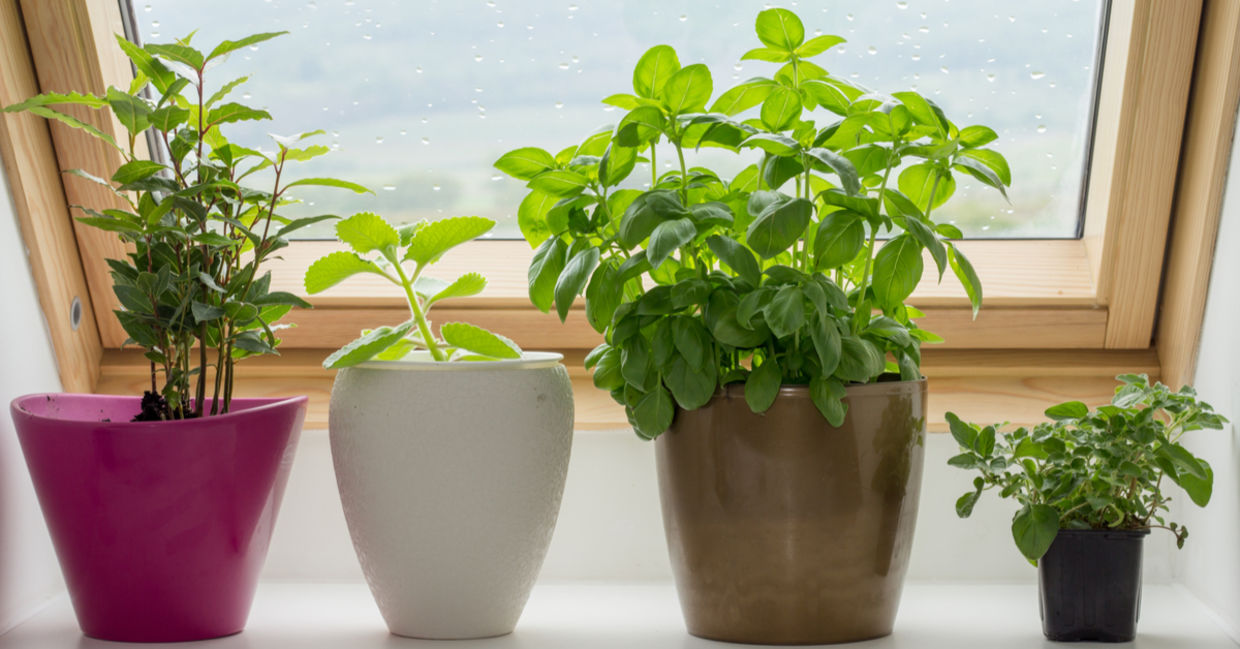
(Carlos Amarillo / Shutterstock.com)
Creating an indoor herb garden can certainly save you money, but it also has many other surprising benefits. Plants in the home improve air quality by soaking up volatile organic compounds, a type of indoor pollutant. Plus, certain herbs repel pests, like mosquitoes, flies, or mites.
You can also think of your herb garden as a chance to reconnect with your roots, learning how to care for nature and grow plants from the soil like our ancestors. You can share the learning experience with your entire family. Finally, and possibly best of all, you’ll get to enjoy all the tasty, healthy herbs you grew yourself. So grab a few pots and seeds to get started on your very own easy indoor herb garden at home with these beginner tips.
Pick your plants
The first rule of (green) thumb; grow what you’ll actually use. Choose herbs that you already cook with that you can easily snip from the windowsill. You can order all kinds of seeds online right to your home.
Some ideas? Try going for herbs that flourish all year long, such as rosemary, chives, oregano, thyme, and cilantro. You can also opt for veggies that grow indoors like scallions, radishes, tomatoes, or spinach.
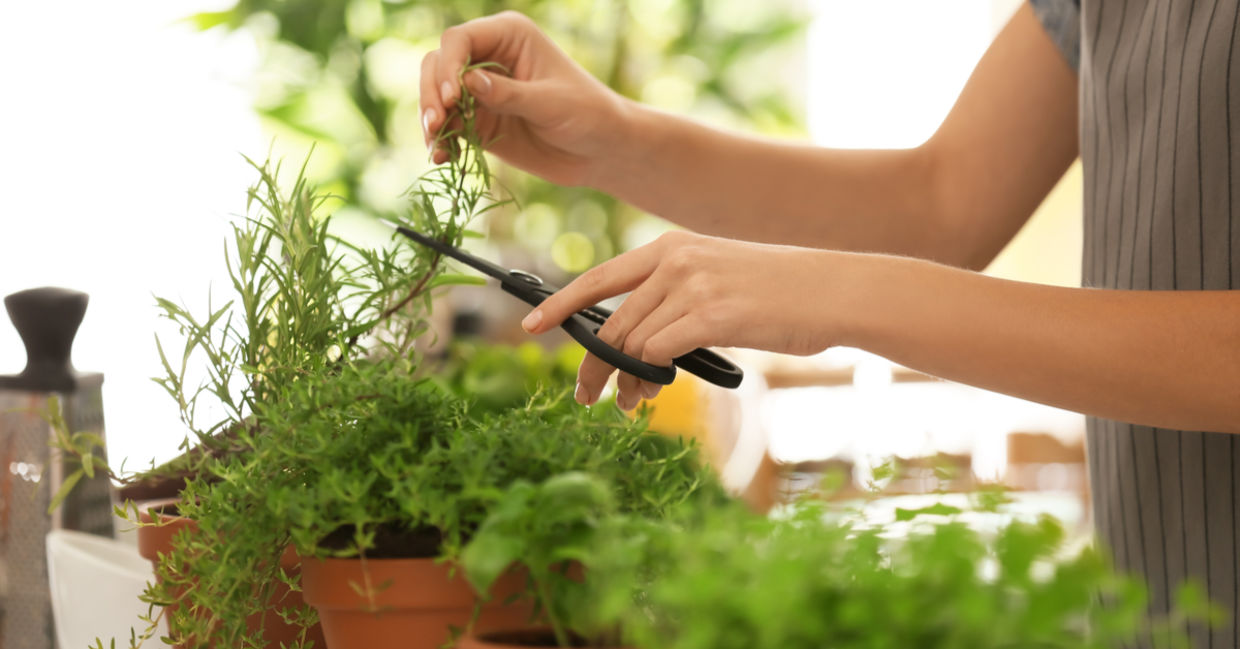
(Pixel-Shot / Shutterstock.com)
Pot your plants
Now you’ll need a place for your plants to grow. Try choosing a planter with drainage holes so the soil doesn’t get too soggy. Then pot your plants with indoor potting soil. Herbs also grow well in urns and hanging pots. And when it comes to your indoor veggie garden, make sure to grab larger pots.
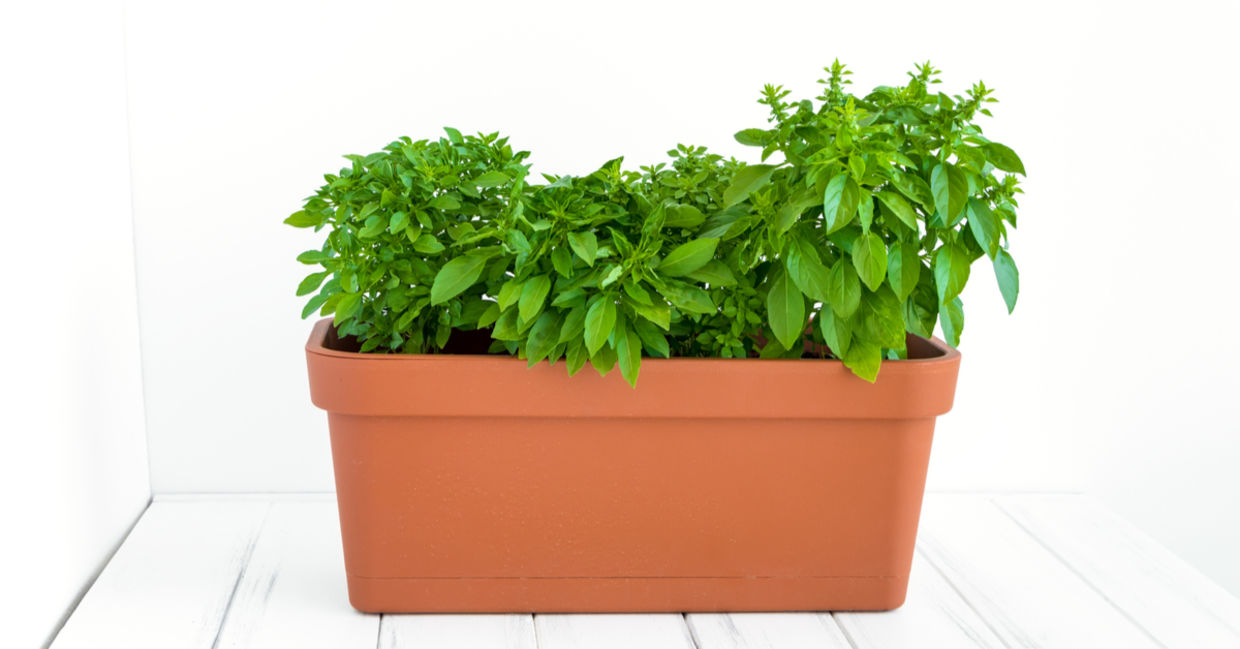
(priia studio / Shutterstock.com)
Find a sunny window
You’ll need to make sure your little indoor garden gets enough sun. Herbs like about 5 hours of direct sunlight so make sure to pick a good spot where they can catch enough rays. Just check that the reflected heat isn’t too intense. You can also purchase small grow lights as an alternative.
If your kitchen doesn’t have an area for direct sunlight, make sure to move the plant in an area that has a light source for enough hours in the day. Keep in mind that some plants have different sunlight preferences. Most need daytime temperatures of 68 to 70 degrees F with 30 to 50 percent humidity.
Plants become crispy when humidity is too low, or start to rot when too high. You can increase humidity by keeping a dish of water near the plants. Certain plants, like a peace lily will reduce humidity levels because it absorbs moisture from the air through its leaves.
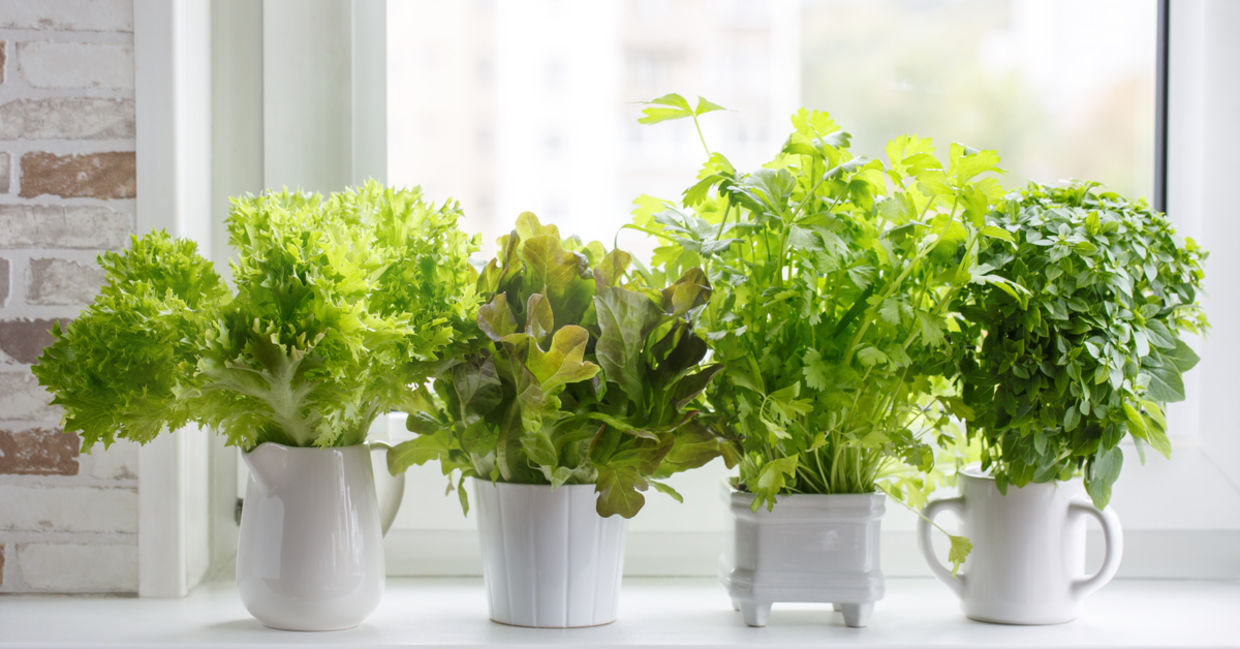
(Geshas / Shutterstock.com)
Just add water
Once you plant your herbs, make sure to water them regularly using the spray nozzle on your kitchen sink or with a mister.
And as Wendell Berry put it, “We learn from our gardens to deal with the most urgent question of the time: How much is enough?” So make sure not to overwater. When in doubt, check the recommended watering amount for each plant. Also, always water your soil before you transplant from one pot to another.
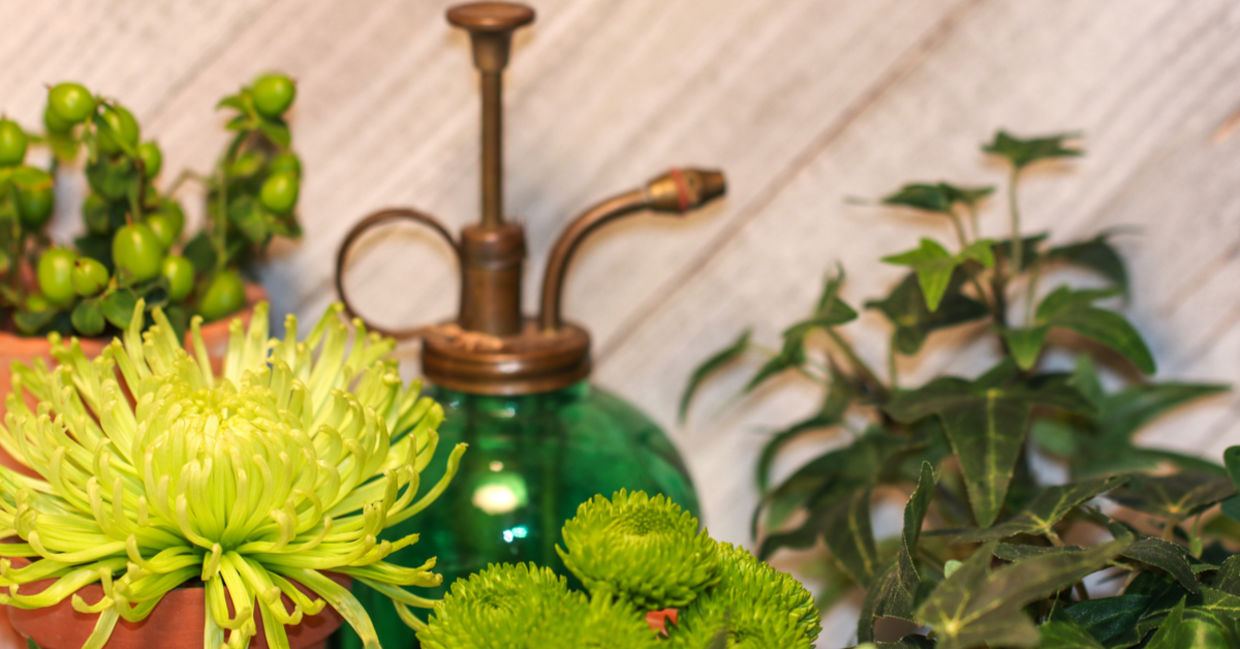
(Nancy J. Ondra / Shutterstock.com)
Fertilize
Fertilizer helps keep plants healthy with nutrients, essential to grow. Fertilizer salt may build up over time. Fix this problem every few months by holding the pot over the sink and watering thoroughly. This will allow the salt to drain.
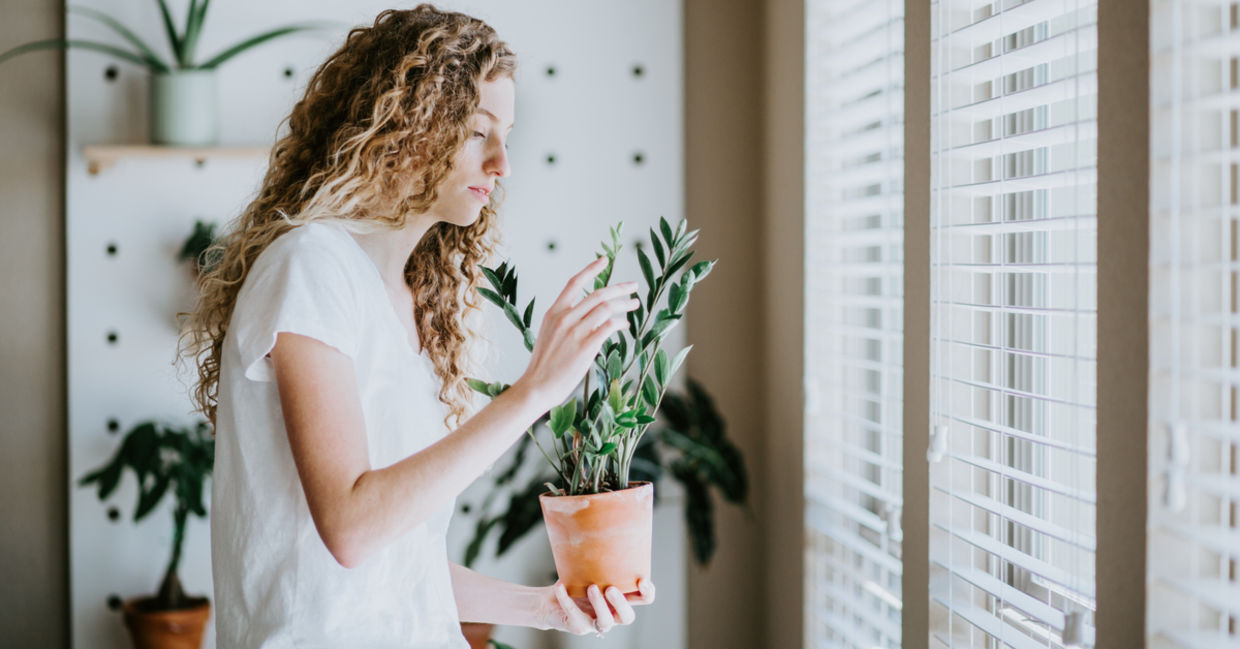
(Megan berreridge / Shutterstock.com)
Plant pals together!
Some herbs are “companions”, while others compete in the same pot. For your garden to thrive, consider combining companion plants together, like basil, tomatoes, peppers, and oregano. Mint also grows well with tomatoes. Meanwhile, cilantro pairs with plants like spinach, caraway, anise, and dill.
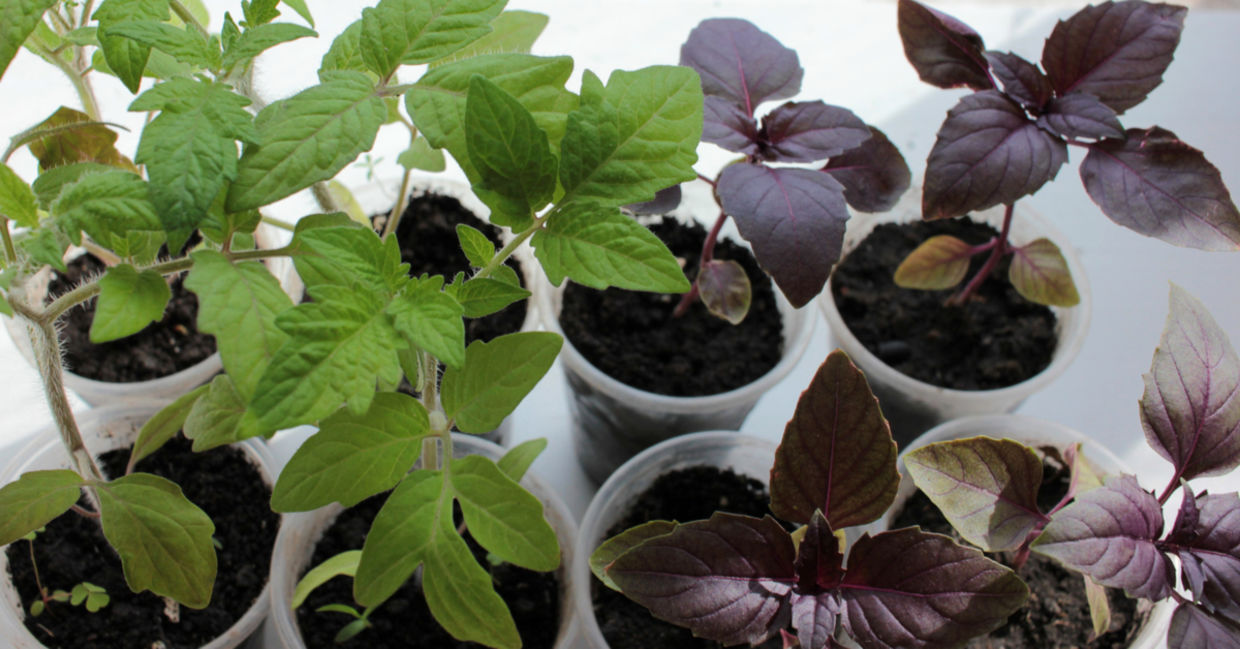
Juver / Shutterstock.com)
Keep pests away
Did you know certain plants keep insects away? Mint repels mosquitoes and aphids, but keep in mind that it also attracts bees. Beetles and flies stay away from sage. Rosemary deters all kinds of bugs. So if you need to keep those pesky pests out, choose the right herbs.
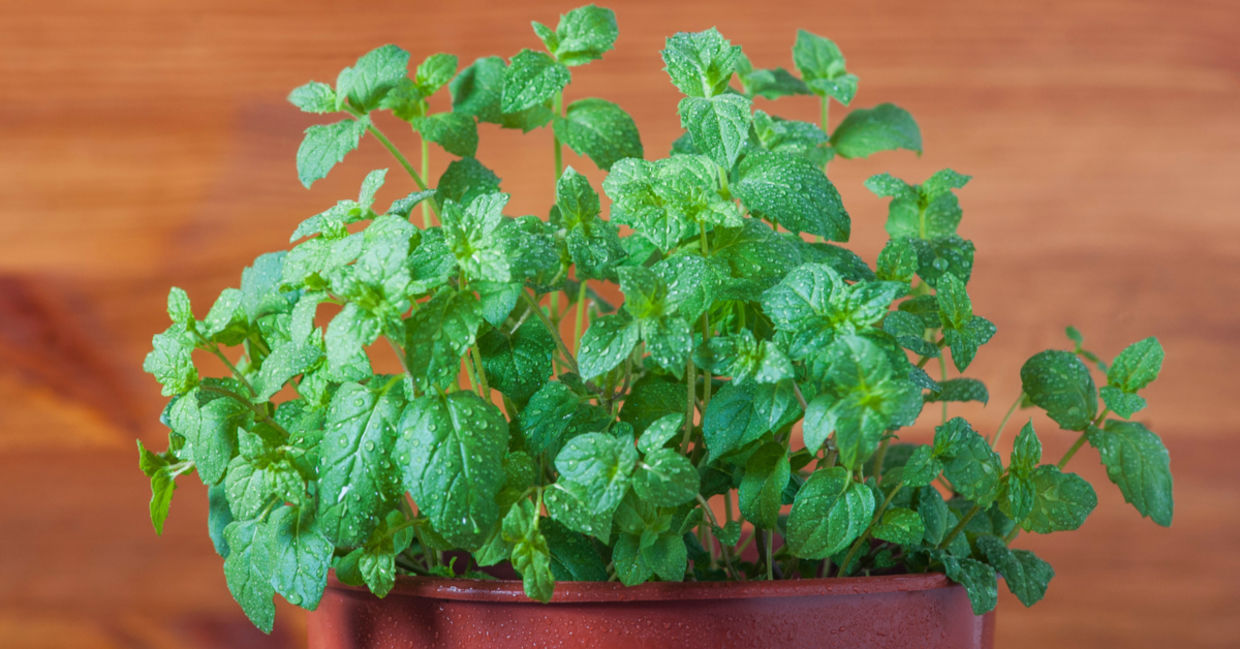
(alexdov / Shutterstock.com)







